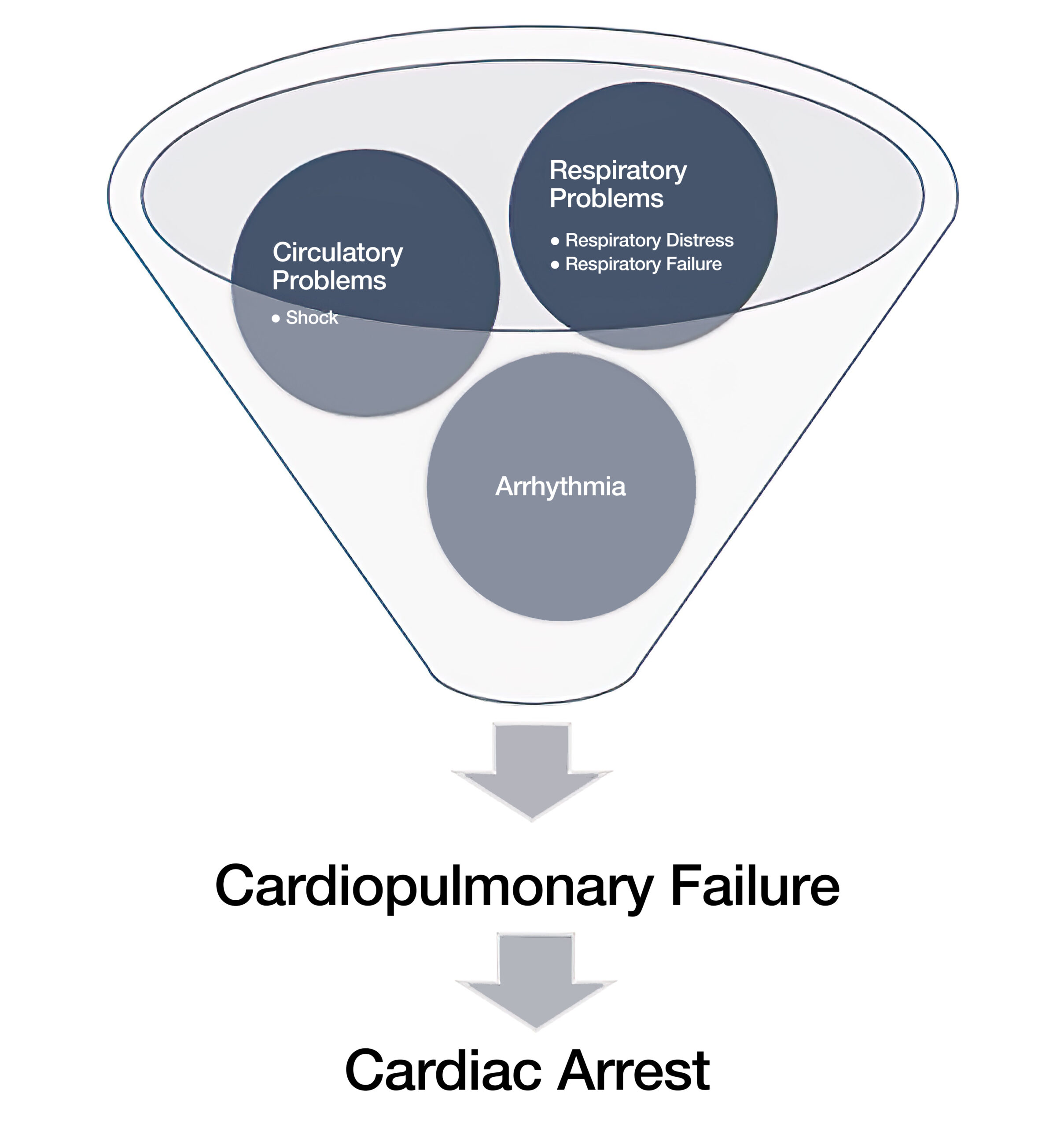Avoiding Cardiac Arrest
Avoiding Cardiac Arrest
Pediatric patients with unrecognized or untreated respiratory failure and shock eventually succumb to cardiopulmonary failure and progress to cardiac arrest.
Pediatric patients may develop cardiac arrest from arrhythmias such as ventricular fibrillation (VF) or ventricular tachycardia (VT). Most cardiac arrests in pediatric patients are not due to arrhythmias but rather to respiratory failure or shock.
Key Takeaway
In children, cardiac arrest is usually preceded by respiratory distress, respiratory failure, or shock.
The team must intervene promptly to prevent the progression of the patient’s medical condition into cardiac arrest. Studies show that the prognosis is generally poor for a child with cardiac arrest. Only 8% of out-of-hospital cardiac arrest patients survive to hospital discharge.12 When the arrest occurs in the hospital setting, about 43% of pediatric patients survive to hospital discharge.13

Cardiopulmonary Failure to Cardiac Arrest Flowchart
Medical Conditions That Lead to Pediatric Cardiac arrest
Hypoxic arrest is the most common cause of cardiac arrest in infants and children and is caused by respiratory failure and shock. In infants and children, it may be due to an underlying disease. Healthcare providers need to reverse respiratory failure and shock before it progresses to cardiac arrest.
Arrhythmias such as VF or VT progress immediately to cardiac arrest. However, arrhythmias leading to cardiac arrest are not common in pediatric patients. Sudden cardiac arrest secondary to arrhythmias occurs in about 5–15% of pediatric cardiac arrests. Shockable rhythms such as VF or pulseless ventricular tachycardia (pVT) occur in about 27% of children undergoing resuscitation.
The incidence of VF and pVT cardiac arrest increases as the patient gets older and is frequently an underlying cause of collapse. Pediatric patients with sudden cardiac arrest are likely to have underlying cardiac conditions that cause arrhythmias and are, unfortunately, undiagnosed until sudden cardiac arrest occurs.
12 Fink EL, Prince DK, Kaltman JR, et al. Unchanged pediatric out-of-hospital cardiac arrest incidence and survival rates with regional variation in North America. Resuscitation. 2016;107:121–128.
https://www.sciencedirect.com/science/article/abs/pii/S0300957216304026
13 Holmberg MJ, Wiberg S, Ross CE, et al. Trends in survival after pediatric in-hospital cardiac arrest in the United States. Circulation. 2019;140(17):1398–1408.
https://www.ahajournals.org/doi/full/10.1161/CIRCULATIONAHA.119.041667